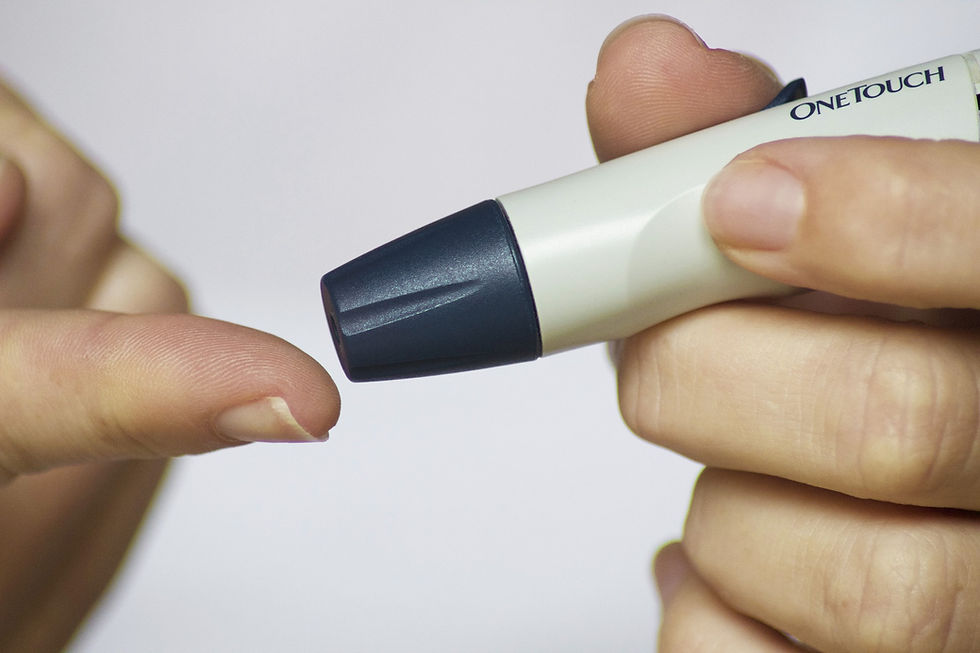Signs Your Cortisol is Out of Balance And How to Fix It
- Nicole Barney
- Jan 21
- 4 min read
Updated: Feb 21

You wake up exhausted, rely on caffeine to get through the day, and feel wired but tired at night. Your weight won’t budge no matter how clean you eat, and your sleep is a mess. Sound familiar? These could be signs that your cortisol—the body’s primary stress hormone—is completely out of balance.
Cortisol isn’t the enemy. It’s essential for energy, focus, and even survival. But in today’s world, where stress is constant and recovery is often an afterthought, cortisol levels can swing wildly between being too high and too low. When that happens, your metabolism, mood, and overall well-being take a major hit.
Understanding how cortisol functions and learning to regulate it can change everything—from your energy levels to how well you sleep and even how your body stores fat. Let’s break it down.
High vs. Low Cortisol: How to Tell If Yours is Out of Balance
Cortisol follows a natural rhythm. Ideally, it should be highest in the morning to wake you up and gradually decline throughout the day, reaching its lowest point at night to help you wind down. When this cycle gets disrupted, you may experience either chronically high cortisol, low cortisol, or a dysfunctional cortisol pattern that leaves you feeling depleted.
Signs of High Cortisol:
Feeling “tired but wired,” especially at night
Unexplained weight gain, particularly around the midsection
Frequent anxiety, racing thoughts, or irritability
Poor sleep or waking up in the middle of the night
Increased sugar and carb cravings
Digestive issues like bloating or acid reflux
Frequent colds or a weakened immune system
Signs of Low Cortisol:
Extreme fatigue, even after a full night’s sleep
Feeling weak, lightheaded, or dizzy upon standing
Difficulty handling stress or feeling emotionally drained
Low blood pressure or constant salt cravings
Brain fog, forgetfulness, or lack of focus
Reduced motivation and drive
Frequent inflammation, joint pain, or slow recovery from workouts
Cortisol imbalances don’t just happen overnight. They develop over time due to chronic stress, poor sleep, excessive caffeine, overtraining, under-eating, and nutrient deficiencies. The good news? You can reset your cortisol levels naturally.

How Diet, Stress Management, and Movement Impact Cortisol
Cortisol isn’t just about stress—it’s deeply tied to your diet, how you move, and how well you recover. When one of these areas is off, your cortisol regulation suffers. Here’s what matters most:
1. Diet: What You Eat Determines How You Feel
Your body perceives blood sugar crashes, extreme calorie restriction, and processed foods as stressors. If you start your day with coffee on an empty stomach or rely on sugar and refined carbs, you’re putting unnecessary strain on your adrenals.
Prioritize protein and healthy fats at breakfast to stabilize blood sugar and prevent cortisol spikes.
Include magnesium-rich foods (avocados, dark chocolate, spinach) to support adrenal function.
Swap out processed carbs for slow-digesting carbs like sweet potatoes, quinoa, and legumes.
Cut back on excessive caffeine, especially in the afternoon, to prevent cortisol dysregulation.
2. Stress Management: Recovery is Non-Negotiable
Your nervous system needs balance between sympathetic (fight or flight) and parasympathetic (rest and digest) states. If you’re always operating on high alert, your body never gets the signal to relax.
Prioritize deep breathing and mindfulness exercises to activate the vagus nerve, which helps lower cortisol.
Set boundaries with work, social media, and overstimulation to avoid chronic stress responses.
Take short breaks during the day to avoid cortisol spikes from prolonged mental exertion.
Engage in activities that naturally lower cortisol, like reading, walking outside, or stretching.
3. Movement: Train Smart, Not Harder
Over-exercising—especially excessive cardio or high-intensity workouts—can actually increase cortisol levels if your body isn’t properly recovering. On the other hand, complete inactivity leads to poor circulation and metabolic sluggishness.
Strength training 2-4 times per week helps regulate cortisol and improve insulin sensitivity.
Walking after meals helps lower cortisol and supports digestion.
Avoid doing intense workouts late at night, as they can interfere with your natural cortisol decline.
Consider incorporating Pilates, yoga, or mobility work as forms of restorative movement.

Morning vs. Evening Routines for Cortisol Balance
Resetting your cortisol rhythm starts with how you wake up and wind down each day. Creating routines that support your body’s natural hormone cycles will help you feel energized in the morning and relaxed at night.
Morning Routine: Support a Healthy Cortisol Awakening Response
Get natural sunlight within 30 minutes of waking to reinforce your body’s circadian rhythm.
Eat a high-protein, nutrient-dense breakfast within an hour of waking.
Hydrate before caffeine—drink water with sea salt or lemon to support adrenal function.
Move your body—light stretching or a short walk signals your body to release cortisol appropriately.
Evening Routine: Help Cortisol Decline for Better Sleep
Avoid screens and blue light at least an hour before bed.
Take magnesium or herbal adaptogens like ashwagandha to support relaxation.
Dim the lights and create a calm environment to signal to your body that it’s time to wind down.
Engage in low-stress activities like journaling, reading, or breathwork to lower nighttime cortisol levels.

Mastering Cortisol for Better Energy and Resilience
Cortisol is neither good nor bad—it’s about balance. When properly regulated, it gives you energy, focus, and the ability to handle life’s stressors. When out of sync, it leaves you feeling drained, foggy, and struggling with your metabolism. The key is not just managing stress, but building resilience through diet, movement, and intentional recovery.
If you’ve been struggling with burnout, anxiety, poor sleep, or stubborn weight gain, cortisol imbalance could be at the root of it. The good news? Small, daily changes can shift your body back into a state of hormonal balance and vitality.
This post may contain affiliate links. We may earn a commission if you make a purchase through these links.



